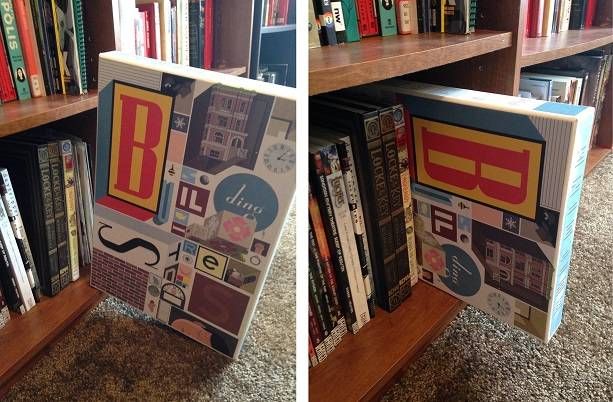
What I Learned from Alphabetizing My Books
I have a friend who is living the book-fanatic’s dream: she owns an adorable hobbit-like house lined with built-in bookshelves, and all of her books, starting with red near the front door and continuing through purple and black in the dining room, are arranged in a precise rainbow of spines. It’s breathtaking, and a little scary. I am the kind of person whose books spend at least a week on the floor in another room before they make it into my library. Though I’m not quite ready to sort by color, I’m always looking for ways to organize my collection that are both useful and eye-catching. And so, inflamed by passion after a trip to my friend’s house (with all the bad decision-making that implies), I set out to start alphabetizing my books.
You’ve probably guessed that I ran into problems.
You Need a Lot of Space and/or Flexible Shelving
Book Designers are Not at All Interested in Helping a Girl Out
My fellow Rioter Danika Ellis covered this from the perspective of a bookseller (my husband and I used to own that Astroturf-covered book. It sheds). I can cheat a bit, since I don’t have to worry about strangers coming into my home to check out my books, but certain book designs literally do not fit anywhere. Chris Ware’s experimental graphic-novel-in-literal-pieces, Building Stories, has the dubious honor of being both the coolest and most frustrating gift I have ever received.

Whyyyyyyy
My eventual solution: Banish it to the living-room side table.
Classification is Haaaaaaard, or: Batman Screwed Up My Filing System
Straight-up alphabetizing my books is pretty useless: if you went to the library to prepare for a trip to Scotland, you’d just have to wander down the aisles starting at A and hope someone early in the alphabet wrote a whole series of Scottish travel books. So I started with some very basic categories: fiction, subdivided into children’s books, short story anthologies, plays, and general fiction; nonfiction, subdivided into writing, history, and sports; and comics (I have, um, kind of a lot of them).
I immediately ran into problems with the history section while alphabetizing my books. After twenty minutes spent digging all my history books out of their various boxes, I automatically began to shelve them according to subject, not looking at the author’s name at all. Maybe this could be my exception, I thought. But I found myself straying from the path again and again. Garth Nix’s Across the Wall should be filed under “short story anthologies,” but I didn’t want to separate my Old Kingdom books (they’re one of the few matching sets I have!). My collection of manga wasn’t a problem, since each series generally has a single creative team. But I’ve been reading Batman for many years, through many different writers, and I didn’t want to scatter all of my Bat-books to the Bs, Ds, Ls, and Ms. Suddenly I’m a lot more sympathetic to the person who filed several of the trades at my local library under “Author: Batman.”
So I surrendered, and filled my bookcases the same way I always do: using an arcane classification system in which “vintage books about spies,” “sci-fi and fantasy books I read in high school,” and “heavy books that make me nervous when I put them at the top of the bookcase” all get their own space. It’s kind of ugly and definitely not user-friendly. But, read properly, it just might be the best window into my brain.

















